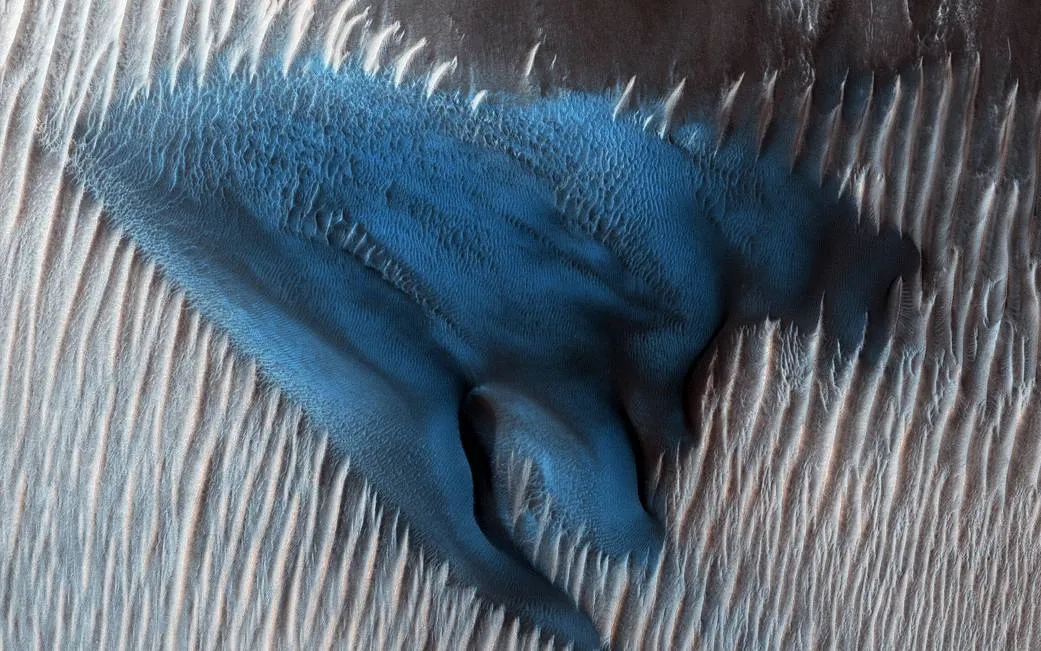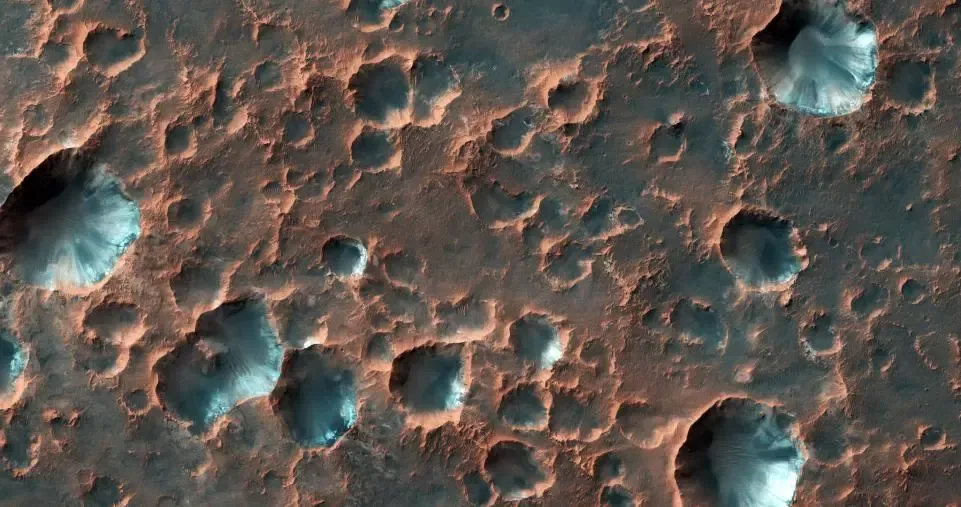
Mars is the fourth planet from the Sun and the second-smallest planet in the Solar System after Mercury. In English, Mars carries a name of the Roman god of war, and is often referred to as the "Red Planet" because the reddish iron oxide prevalent on its surface gives it a reddish appearance that is distinctive among the astronomical bodies visible to the naked eye.
The striking image was captured by NASA’s Mars Reconnaissance Orbiter’s (MRO) camera, which is managed by the University of Arizona, on January 24 and released this week while the planet remains in the grip of a massive sandstorm.
There are sand dunes across the surface of Mars, especially in crater floors. In the bottom of Lyot Crater, there is a “ field of dunes.” According to a NASA , one dune is made of finer material and/or has a different composition from the surrounding, greyish dunes.
NASA launched the MRO into space in 2005 to study the history of water on Mars. It takes pictures regularly and sends stunningly colorful images of the surface of Mars to earth. The machine uses a powerful telecommunications system, or “ interplanetary internet ” as NASA calls it to send the high-resolution images to NASA. NASA is required to make the images public and posts them on Flickr.

Sand dunes on Mars are “classic barchan,” or crescent-shaped, dunes. Barchan sand dunes aren’t as common on earth, but are formed in a similar way. When wind blows in only one direction, it creates a pile of sand. The sand falls down one side of the pile, making a sharp top to the dune. By definition, the face of the dune is steep, but the trailing wall on the other side is not.